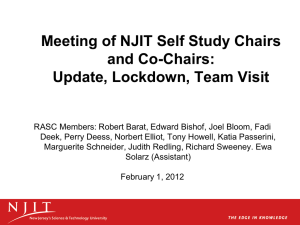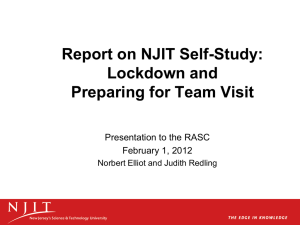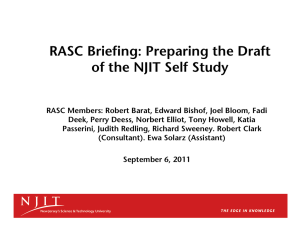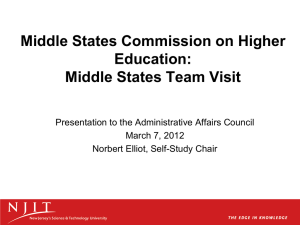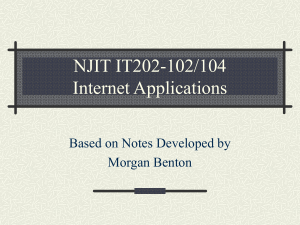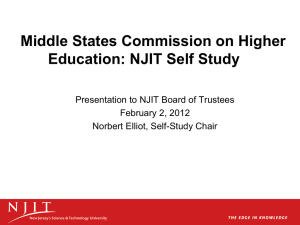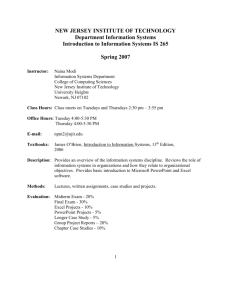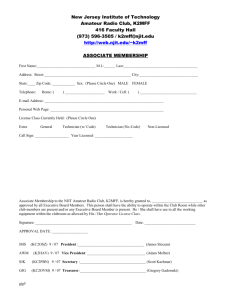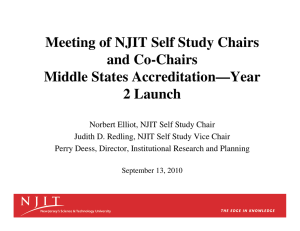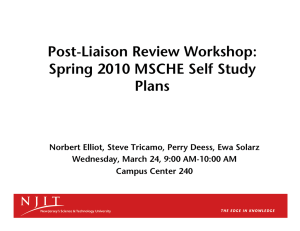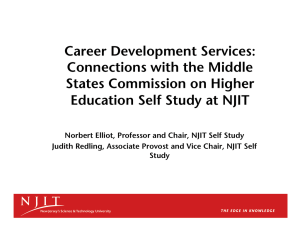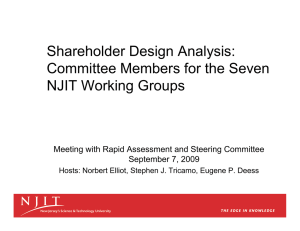RASC Briefing: Preparing the Draft of the NJIT Self Study
advertisement
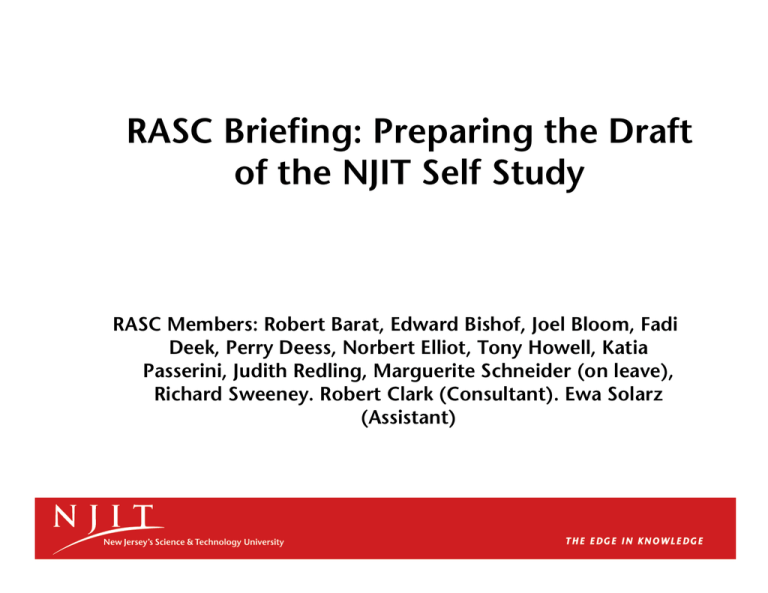
RASC Briefing: Preparing the Draft of the NJIT Self Study RASC Members: Robert Barat, Edward Bishof, Joel Bloom, Fadi Deek, Perry Deess, Norbert Elliot, Tony Howell, Katia Passerini, Judith Redling, Marguerite Schneider (on leave), Richard Sweeney. Robert Clark (Consultant). Ewa Solarz (Assistant) University Accreditation in the Era of Accountability • 1945-1975: The Golden Age – New Jersey Institute of Technology name change in 1975 • 1976-1993: Diversity and Consolidation • 1994-the Present: The Era of Accountability For further reading, Cohen and Kisker, The Shaping of American Higher Education (2nd ed., 2010) University Accreditation in the Era of Accountability • What do we face today? – Action: What do our strategic plans reveal about our responsibilities to our shareholders? – Agent: How do we envision and empower those who will institute responsible change within the contemporary university system? – Agency: How will we ensure that our strategic plans and their assessment mechanisms are complementary, realized, evaluated, and improved? – Scene: How will budget restrictions reshape our present assumptions of university life? – Purpose: How will distinct units work, in complementary fashion, to ensure quality for all shareholders? The NJIT Self Study: A Tour of the Working Group Reports The NJIT Self Study: Gains and Challenges Transition from Working Group Reports to Final Draft • • • • • • • The self study has been central to the working life of NJIT – Not a peripheral activity The final draft will be analytic – Not descriptive The final draft will be evidence-centered – No unsupported assertions The final draft will be unified – No conflicting information or viewpoint The final draft itself serve as evidence of the NJIT strategic planning process – No aspects introduced that are not part of the design of the university The final draft will indicate use of benchmarks – No analysis is too unique for benchmark comparison The final draft will use a single voice representative of the university – No one constituency will control the report Overview • • • • • The Timeline The Master Outline and Core Text The Digital Archive The Preliminary Visit of the Chair The Key Questions We Must Answer Timeline: On Target Master Outline and Core Text: In Development What areas are absent that demonstrate evidence of mission fulfillment? What areas must be combined to demonstrate an analytic, evidence-based framework? The Digital Archive: In Development Preliminary Visit of the Chair • Tour of NJIT and hosting facilities • Meetings with governing board, key administrative officers, the RASC, faculty, and students • Discuss clarity and accuracy of draft, potential conflicts of interest, additional visits, time line (including the six week delivery date of materials), facilities, and agenda Team chair is leader, facilitator, and organizer. Key Questions We Must Answer • What is our mission, how has it driven our actions, and how do we assess those actions in terms of mission fulfillment? • What is the level of mission penetration and consistency? • Are the human, fiscal, and physical resources available now to support mission fulfillment? • What plans are in place to support mission fulfillment in the future?
